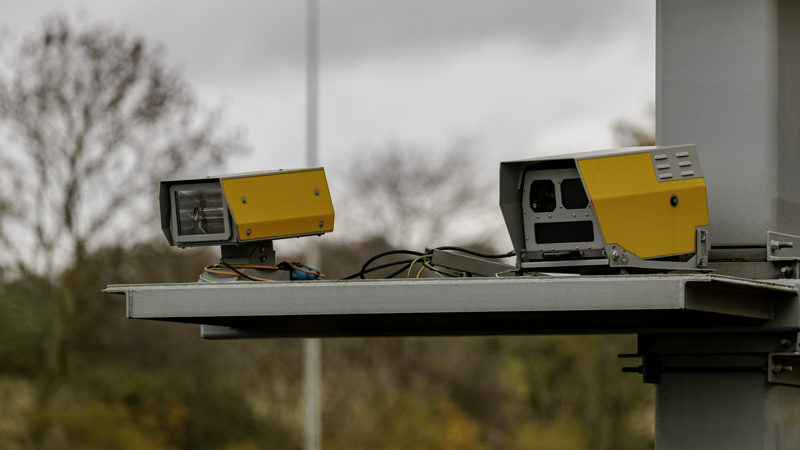Average speed enforcement cameras around roadworks
When you see a fixed speed limit sign on our roads, together with 'Average speed check', this means that vehicles exceeding that speed limit are detected by average speed enforcement cameras.

Provided by us, these cameras work by calculating the time taken for a vehicle to travel over a certain distance. (Other types of speed detection cameras simply calculate the speed of a vehicle as it passes a specific point).
Our average speed enforcement camera are painted yellow. They are equipped with infra-red illuminators, allowing them to work in all weather conditions, 24 hours a day.
How the cameras work
The detection set-up requires cameras in at least two locations. Each vehicle is detected by both an 'entry camera' and an 'exit camera'. The vehicle registration plate is recorded using Automatic Number Plate Recognition (ANPR) as it passes the entry and exit cameras, then matches the vehicle data recorded. It calculates the average speed from the known distance between the entry and exit camera locations and the time taken for the vehicle to pass.
If the average speed exceeds the legal speed limit, the system retrieves the ANPR data and recorded images of the passing vehicle together with date and time stamps from both cameras, creating an evidence record which is sent to the police. (For all vehicles passing the cameras which have not exceeded the average speed limit, the number plate data and vehicle images will be automatically deleted.)
The average speed cameras are equipped with infra-red illuminators and cameras, allowing them to work in all weather conditions, 24 hours a day. Each camera must go through a robust government testing and certification process to ensure that evidence from it can be admissible in UK courts.
Electronic display signs within the average speed check zone
Generally, any electronic signs within the average speed check zone indicated by our hard signs should be blank or 'off'. Any such non-illuminated or blank displays should be disregarded as they don't constitute traffic signs.
In exceptional cases you may pass an illuminated variable speed limit displaying overhead or to the side of the road while you're still within the 50mph average speed limit zone around roadworks.
If you're unsure which speed limit applies on a particular stretch of road, we'd recommend that you always comply with the lower of the speed limits indicated.
Who uses the data?
While we supply vehicle speed detection equipment on our roads, we're not a law enforcement authority. Speed limits are always enforced by the police. Therefore, all data and evidence of speed infringements which is collected by our speed cameras is sent directly, securely and exclusively to the relevant police force. After examination of the evidence the police will decide upon the most appropriate prosecution action.
